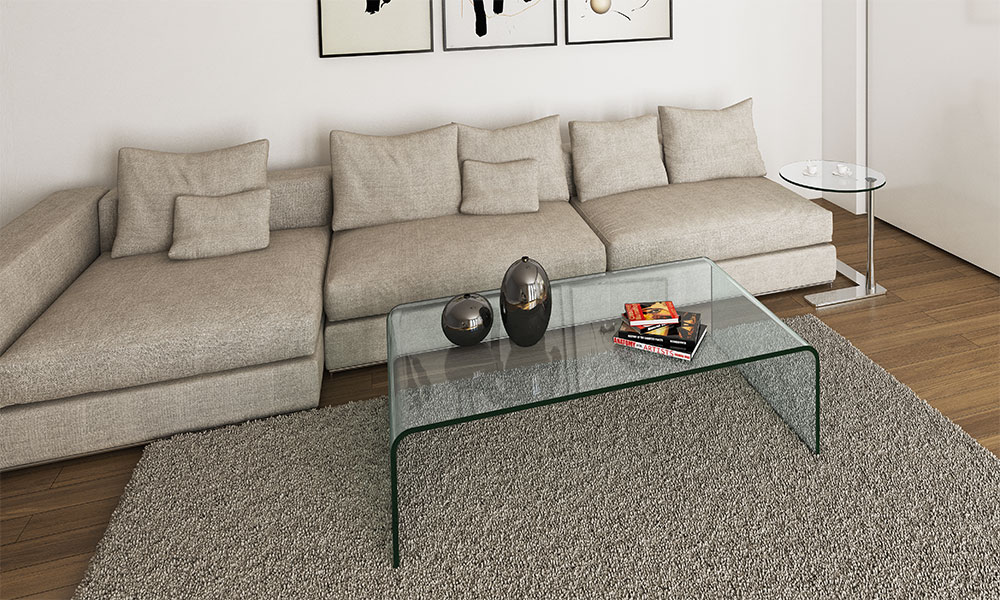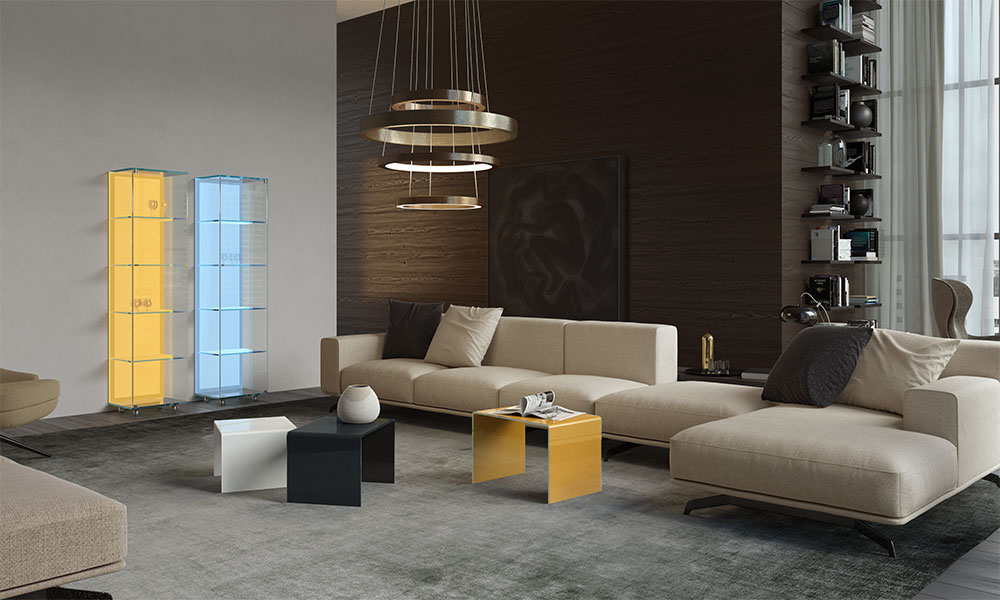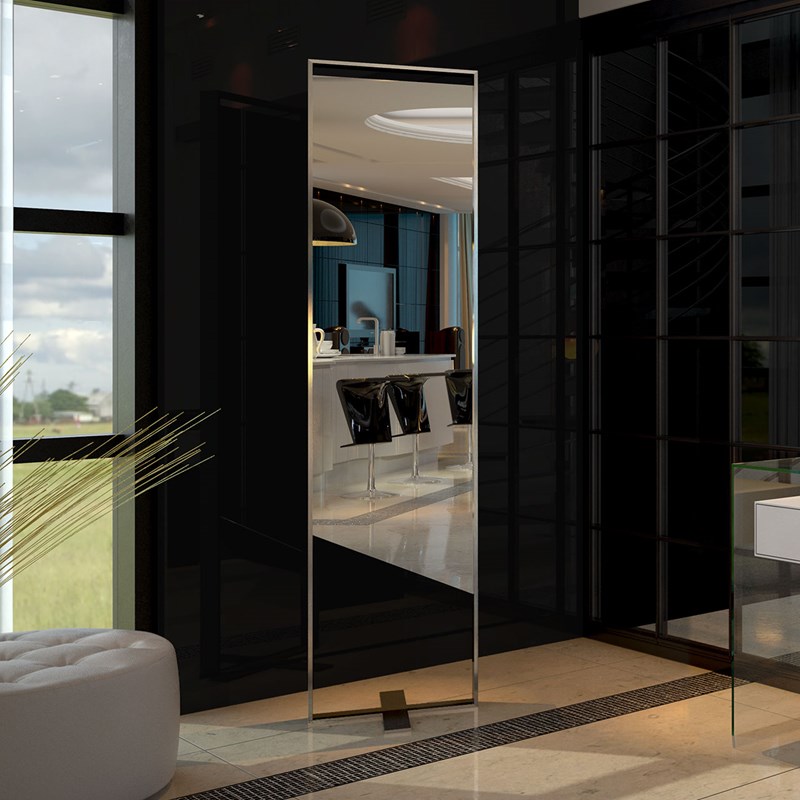-
Free Delivery in DE, AT & CH
-
Made in Germany
-
Individual Customisation Available
Author: DREIECK DESIGN Editorial Team
Last updated: July 31, 2025
Furnishing a small living room to be both cozy and stylish is a unique challenge. Often, you're dealing with limited space, awkward layouts, or poor lighting. But don't worry: with clever planning, optical illusions, and the right choice of furniture, you can transform even a few square meters into a true oasis of well-being that feels larger, brighter, and more open. In this guide, we'll share 10 professional tips on how to furnish your small living room perfectly.
Light colours are essential in small rooms. White, cream, light grey, or soft pastel tones on the walls reflect light and instantly make the room feel more open and airy. Avoid dark, heavy colours, as they absorb light and visually shrink the space. This applies not only to the walls but also to large pieces of furniture like the sofa. A light-coloured sofa on a light floor creates a calm, spacious foundation. You can add pops of colour with cushions, pictures, or smaller decorative items.
Glass furniture is the secret weapon for small living rooms. Thanks to its transparency, it doesn't block sightlines and appears almost invisible. A glass coffee table allows the view of the rug and floor to remain unobstructed, making the room instantly feel larger. The same applies to side tables or console tables. They offer full functionality without visually cluttering the room.

(Photo shows the curved glass coffee table UT 20, which is ideal for small rooms due to its transparency)
A simple but extremely effective trick: choose furniture that stands on slim, high legs. Whether it's a sofa, armchair, or sideboard – when the floor remains visible underneath the furniture, it looks lighter, and the room feels more airy and spacious overall. Avoid bulky, floor-length sofas or solid, boxy furniture that completely conceals the floor.
In a small living room, every piece of furniture should work hard. Opt for multifunctional solutions: A coffee table with a second shelf offers double the storage. Nesting tables are perfect as they provide multiple surfaces when needed but can be tucked away to save space. An ottoman can serve as extra seating, a footrest, or, with a tray on top, as a small side table.

(Photo shows lacquered nesting tables ST 06, which are flexible and space-saving)
When floor space is limited, think vertically! Use the walls and the height of the room. Tall but narrow bookshelves visually stretch the room and create a lot of storage without taking up valuable floor space. Floating wallboards are also an excellent, floor-free solution for books and decoration.
Light is a key factor in making small rooms appear larger. Let in as much natural light as possible – use light, sheer curtains instead of heavy, dark fabrics. Also, combine multiple artificial light sources: a ceiling lamp for general brightness, a floor lamp for a reading corner, and small accent lights on shelves or sideboards. This creates depth and makes the room feel more interesting and spacious.
A large mirror is the oldest and most effective trick to enlarge a room. It not only reflects light but also the room itself, creating an illusion of more depth and space. It's best to place the mirror opposite a window to capture maximum light, or on the longest wall of the room.

(Photo shows the standing mirror GIOLINA, which creates a sense of space through its reflection)
Place the largest piece of furniture – usually the sofa – against the longest wall. This creates a calm foundation. Don't push all the furniture against the walls; a small gap can make the room feel more airy. Ensure clear pathways and group furniture into functional islands, e.g., a reading corner with an armchair, side table, and lamp.
The most common mistake in small rooms is too much small-scale decoration. This can quickly look cluttered and busy. The rule is: "less is more". Opt for fewer, but larger and more impactful decorative objects. A large piece of wall art looks calmer and more generous than a busy gallery wall with many small frames.
Nothing makes a small room look smaller than clutter. Plan for enough closed storage from the start to hide everyday items. A tidy, clear surface automatically appears larger and calmer. Regular decluttering helps to keep the essentials in focus and not to overload the room.
Light colours are the key to visually enlarging small spaces. Shades like white, cream, light grey, or soft pastels reflect light and instantly make the room feel more open and airy. This applies to both the walls and large pieces of furniture like the sofa. Dark colours should be avoided or used only for small, deliberate accents.
Furniture that exudes a sense of visual lightness is ideal. This includes:
A large mirror is a very effective trick. It enlarges a room by reflecting both light and the space itself, creating an illusion of more depth. It is best to place the mirror opposite a window to capture and distribute maximum daylight, or on the longest wall of the room to emphasize its width.
The rule is: "less is more". Avoid too many small decorative items, as they can quickly look busy. Instead, opt for fewer, but larger and more impactful pieces. A large piece of wall art appears calmer than a gallery with many small frames. Utilize height with tall, slender plants and keep surfaces as clear as possible to maintain a tidy, spacious atmosphere.